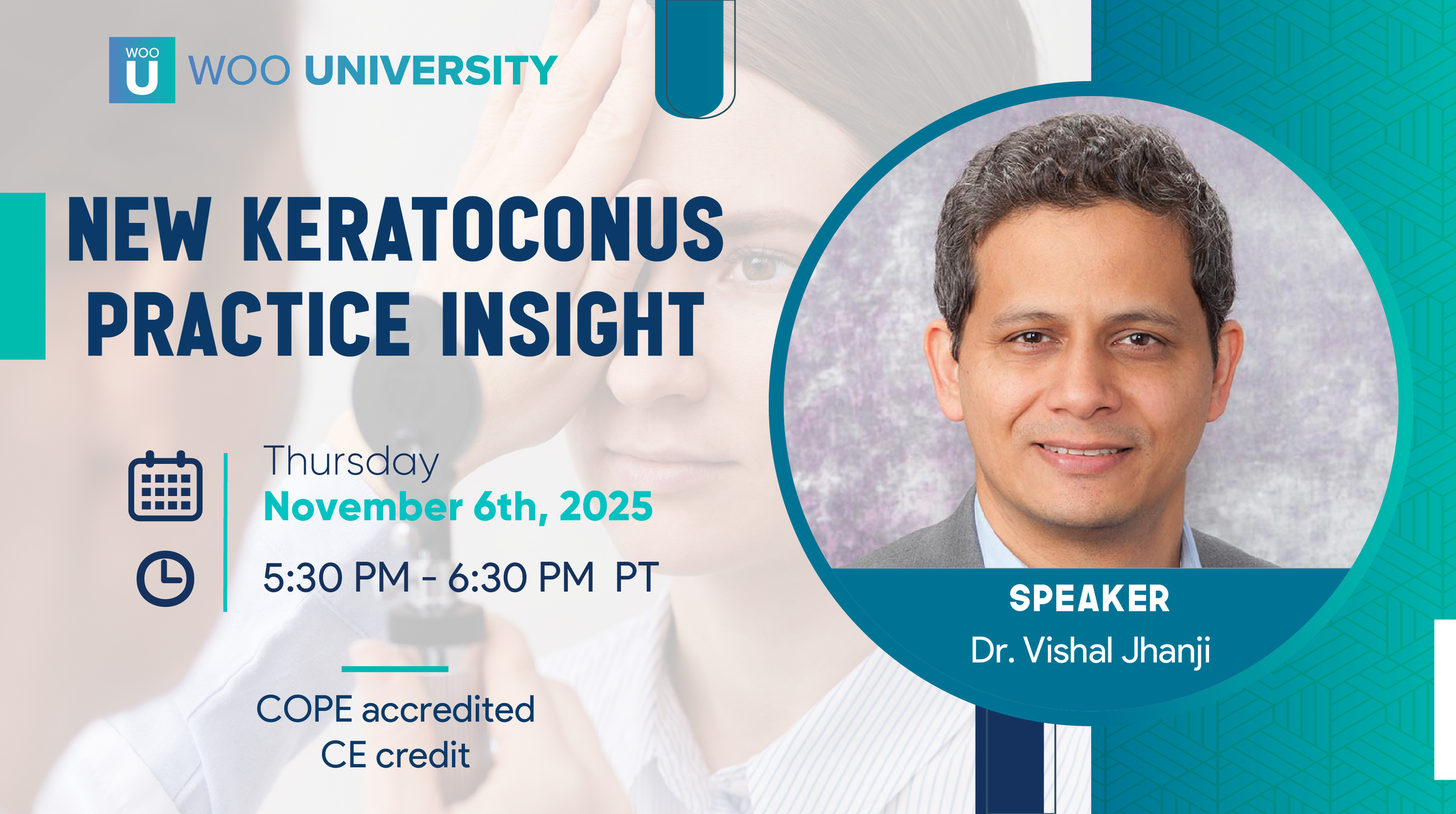
New Keratoconus Practice Insight
This course reviews current diagnostic and management strategies for keratoconus, including advances in imaging, corneal biomechanics, and collagen cross-linking. Participants will gain practical insights to improve early detection, personalize treatment, and optimize visual outcomes.
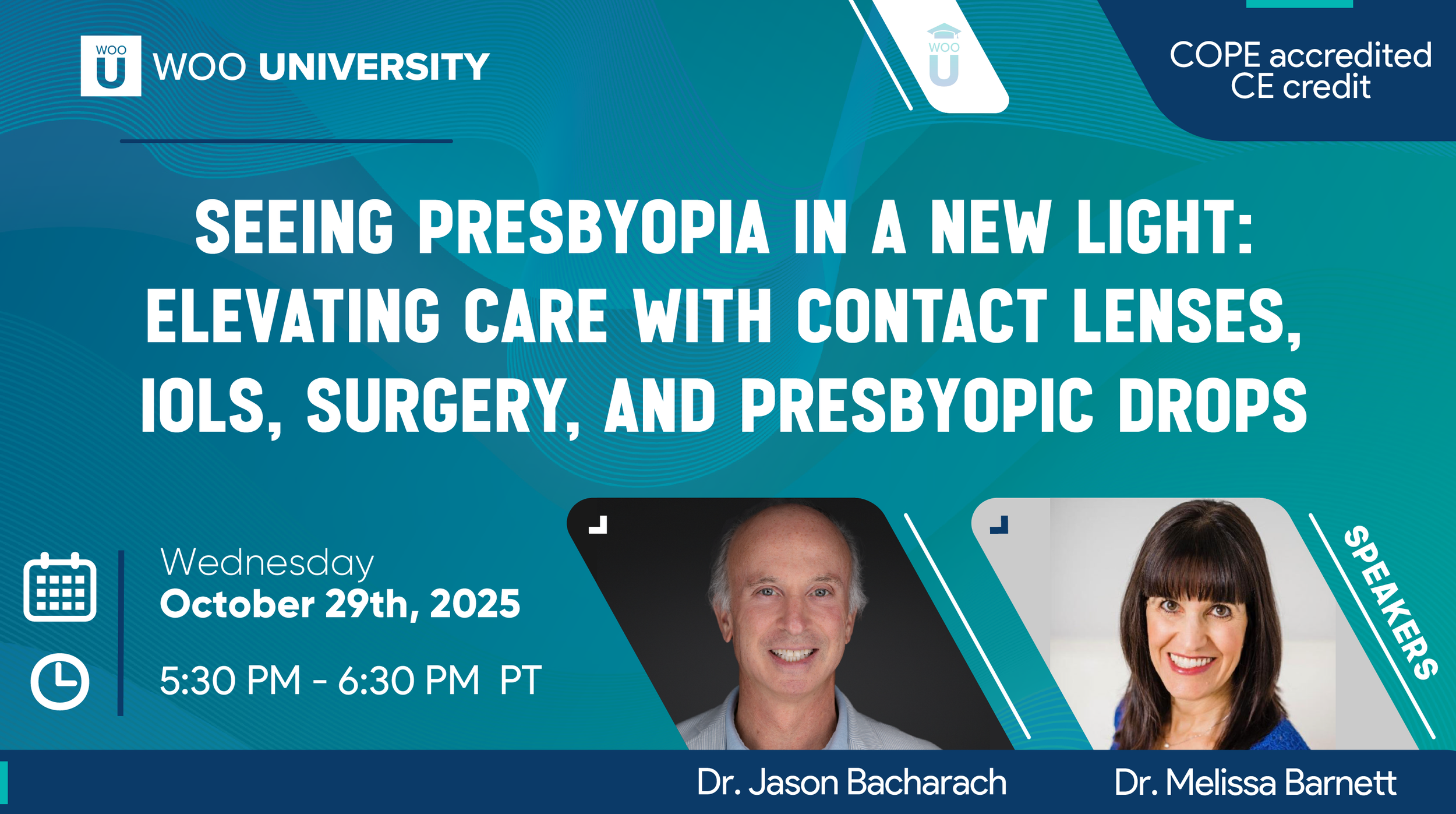
Seeing Presbyopia in a New Light: Elevating Care with Contact Lenses, IOLs, Surgery, and Presbyopic Drops
Managing presbyopia requires thoughtful care. This session reviews current options—devices, surgery, and new pharmaceuticals—while emphasizing teamwork between providers. Participants will gain strategies for optimizing outcomes, addressing challenges, and enhancing co-management to achieve the best results for patients.

YOUR RESOURCE FOR OPTICAL TRAINING AT THE LOFT EYEWEAR SHOW
Kayla Ashlee, founder of Spexy and a certified optician, is a bold industry innovator and international speaker known for challenging the status quo. Through her energetic, practical approach, she turned years of coaching experience into Spexy®—an online training platform that empowers eyecare teams to boost patient care, connection, and profitability. Join her at LOFT Santa Monica for accredited CE classes designed to inspire real change in optical practices.

Dry Eye Disease – Diagnosis and Treatment Pearls From the Trenches
As our understanding of ocular surface physiology continues to evolve, so do the diagnostics and therapeutics we have available to manage dry eye disease. This course will highlight clinically relevant pearls for diagnosing and treating dry eye.
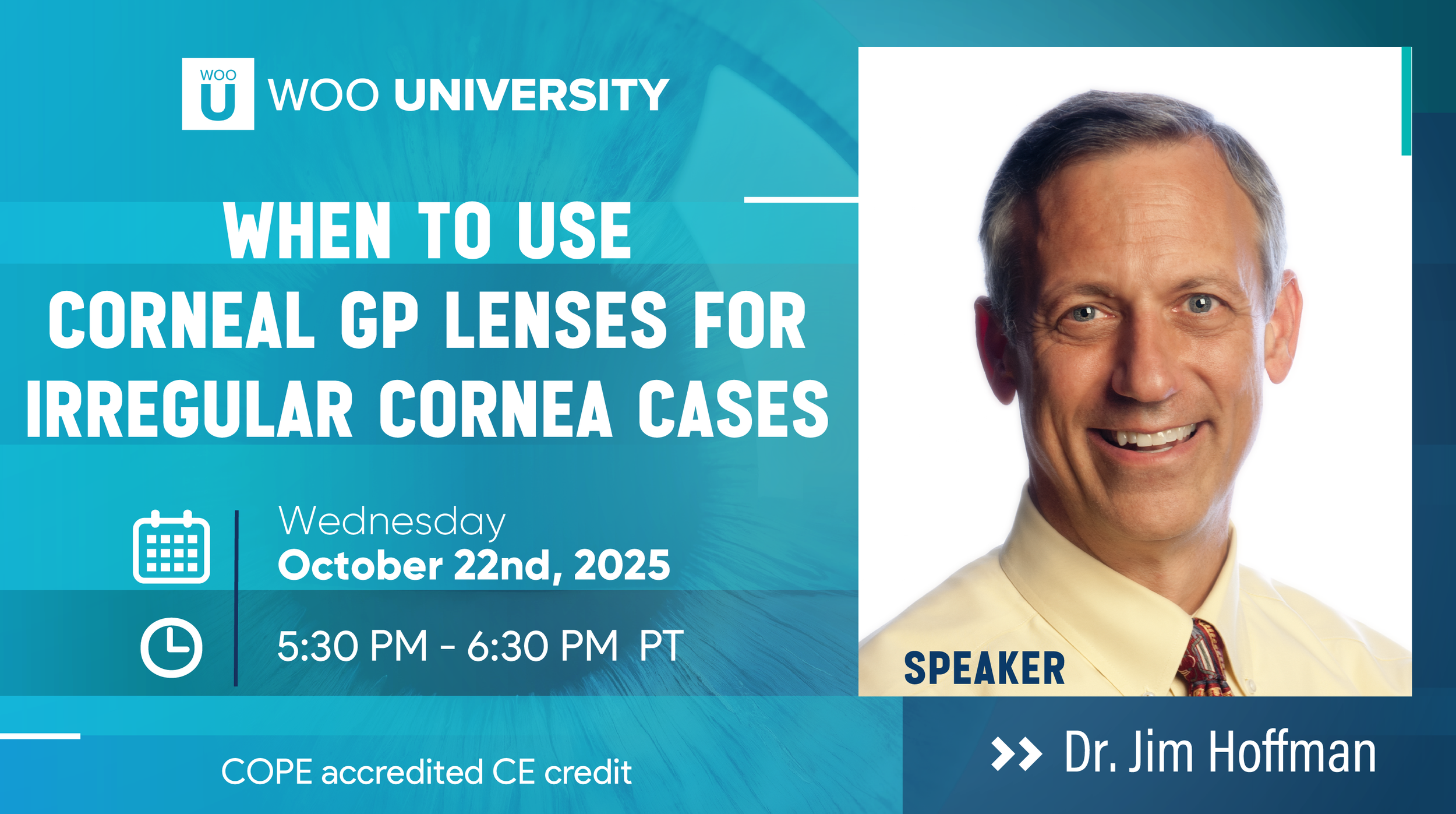
When To Use Corneal GP Lenses for Irregular Cornea Cases
Scleral lenses are not always the answer for irregular cornea patients. During this course, we will review several common complex cornea cases and discuss why a corneal GP lens is the best option. Learn when to use a corneal GP lens instead of a hybrid, custom soft, or scleral lens design.
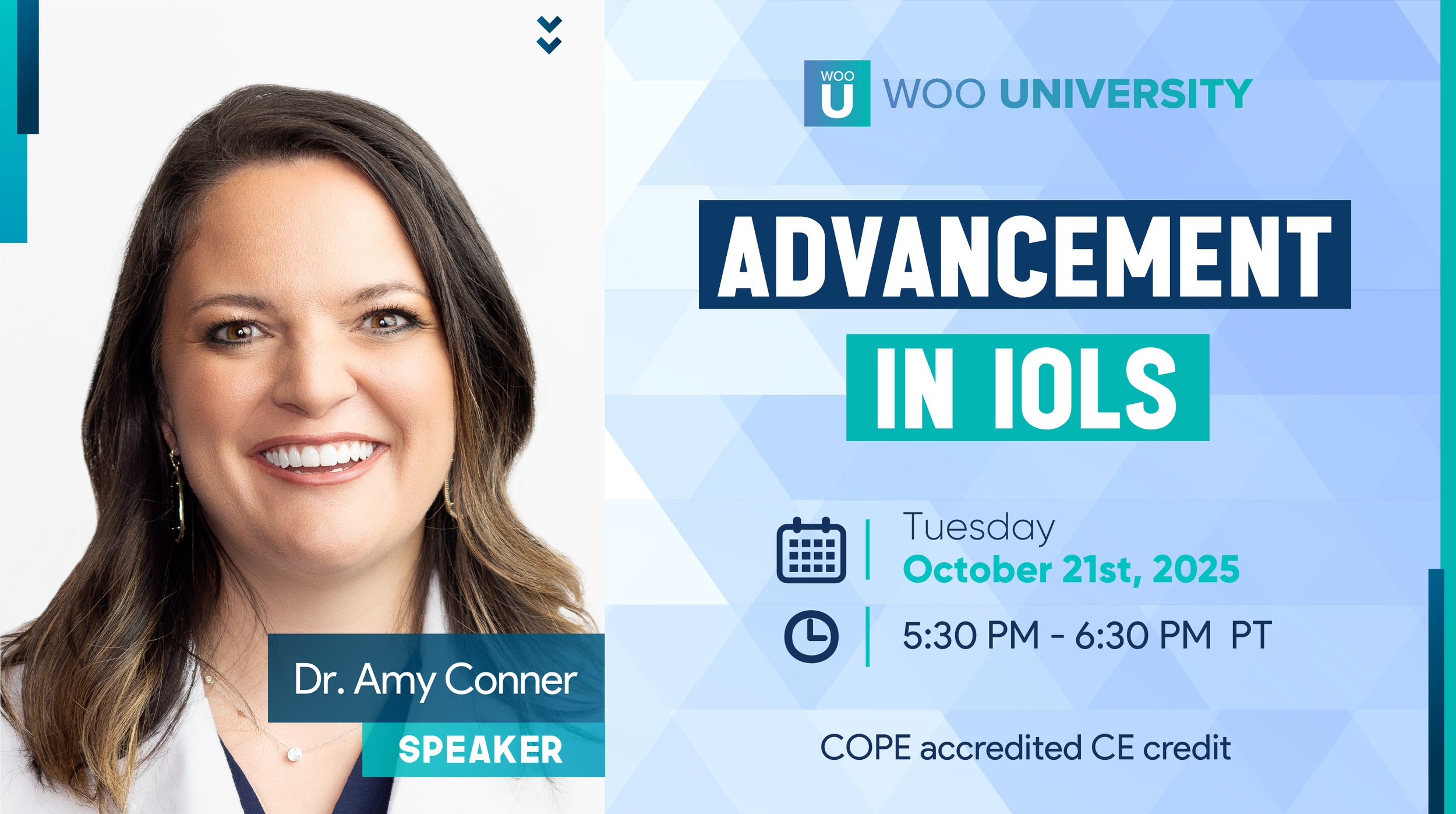
Advancement in IOLs
This course will cover cataract surgery and the implantable lens options available to patients. The course will discuss how to weed through multifocal and extended depth of focus premium cataract implants. The course will cover differences in appearance under slit lamp and what vision ranges a patient can expect from each lens implant.
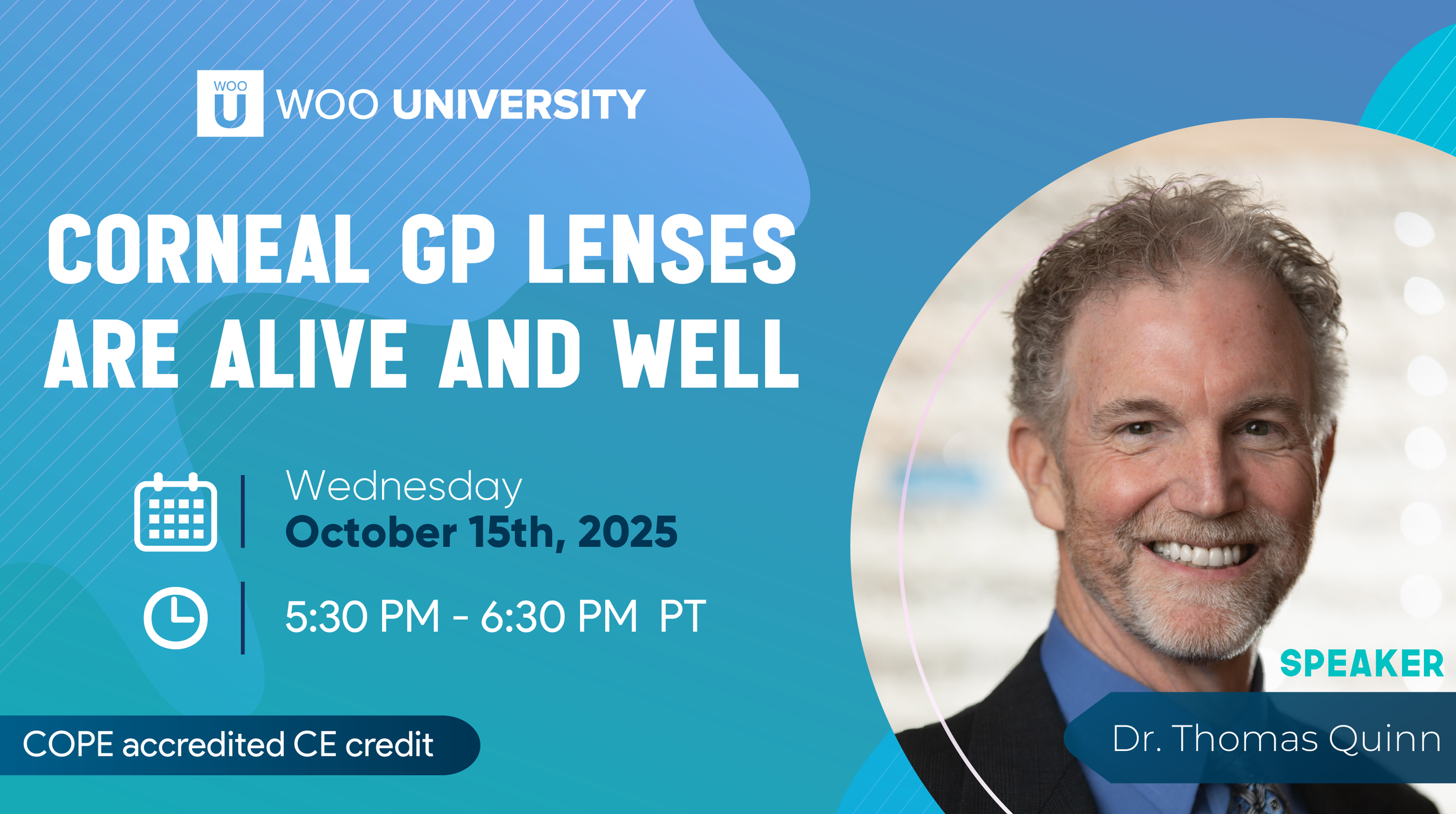
Corneal GP Lenses Are Alive and Well
This course will review several types of patient candidates for corneal GP lenses including spherical GP, Toric GP, Bitoric GP, Back Toric GP, and Multifocal Cornea GPs. We will review several case studies who identify the best candidates for each lens design.
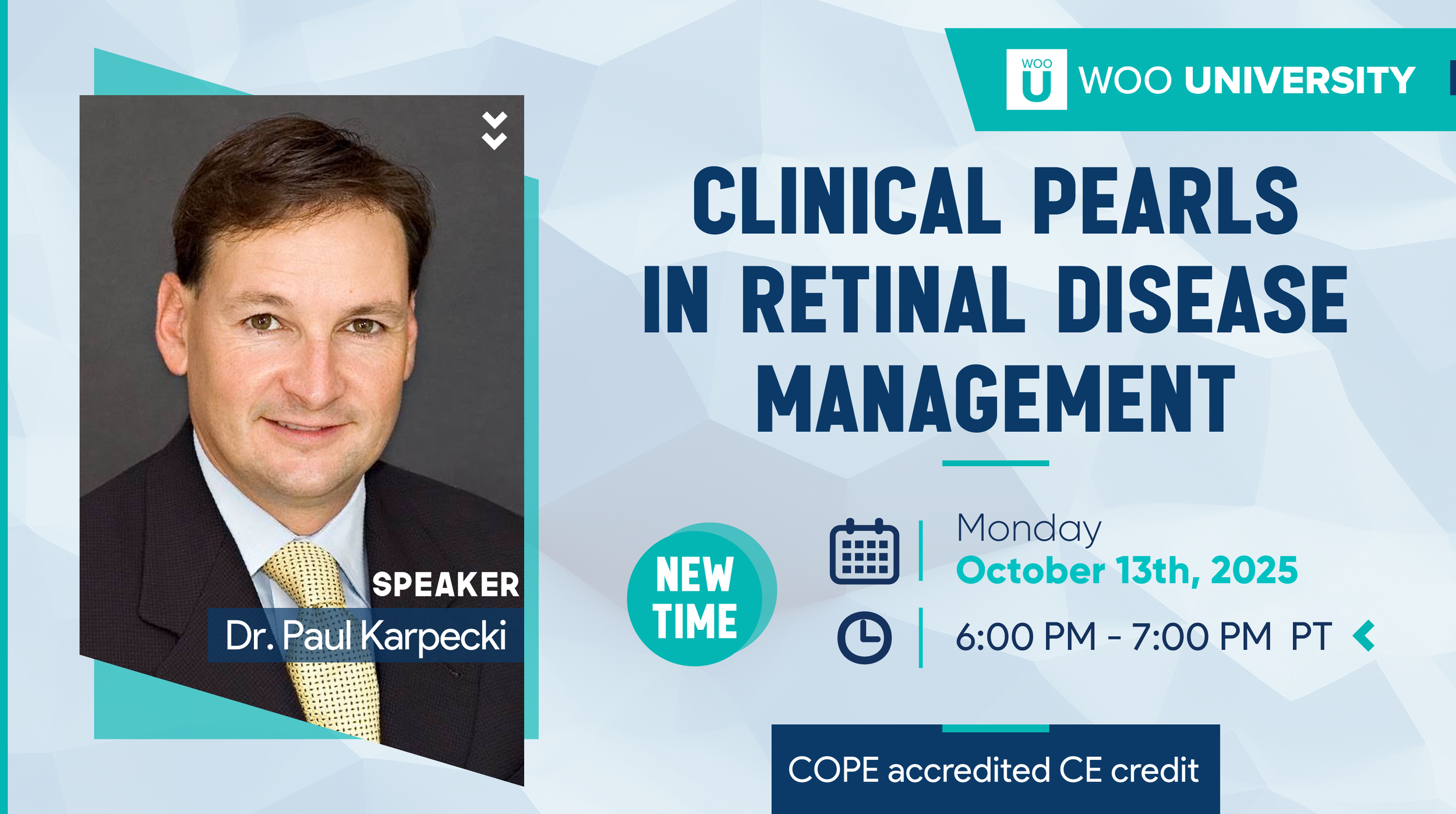
Clinical Pearls in Retinal Disease Management
Optometry’s role in retinal disease management is significant and critical. It extends from diagnosis involving advanced technologies to management across the spectrum of systemic diseases like diabetes, slowing dry AMD progression, knowing what and when to refer versus when to observe. This course emphasizes the clinical skills needed for diagnosis and management of AMD and diabetic retinopathy and shows why optometry must play the key role in retinal disease cases.
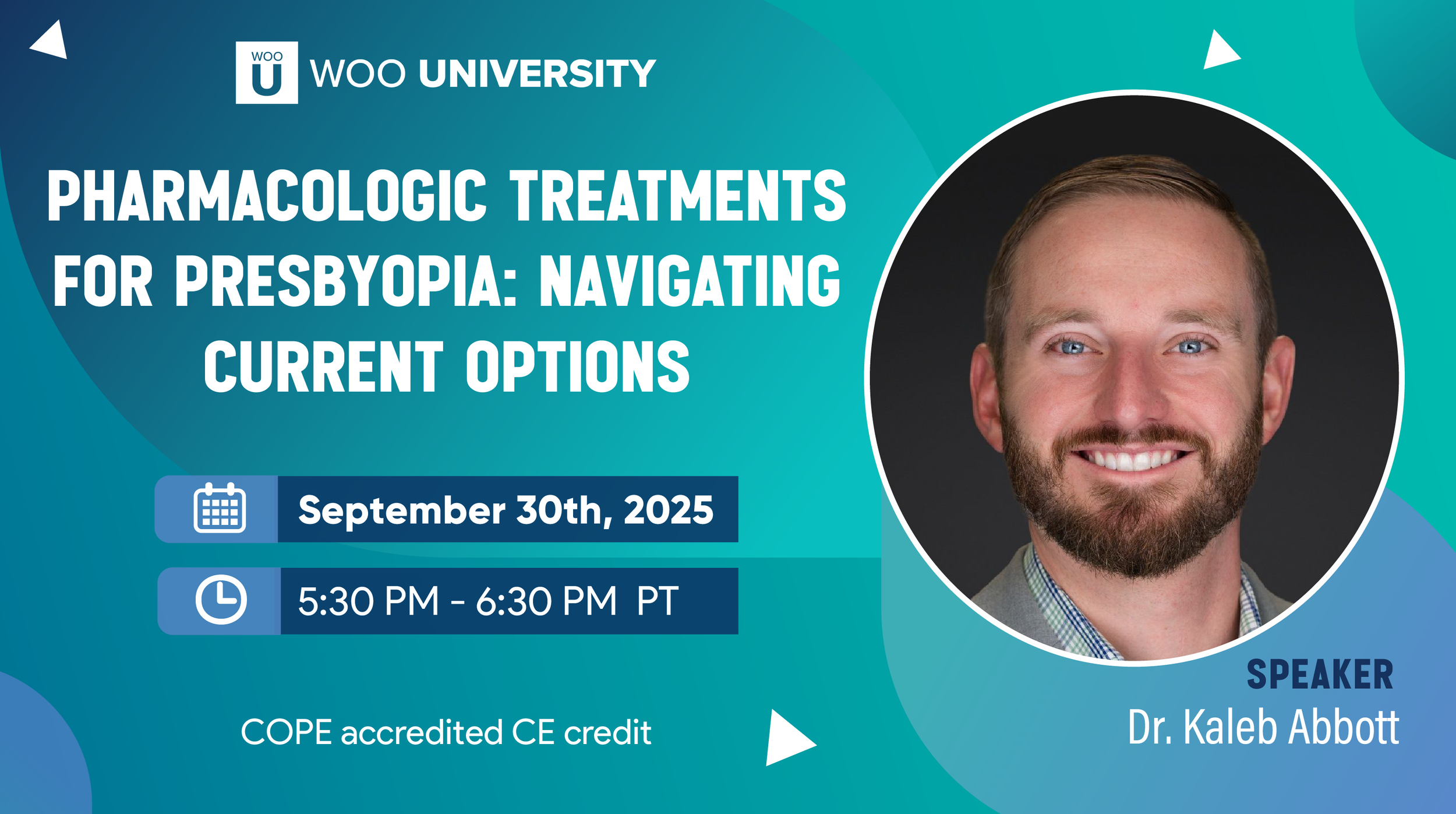
Pharmacologic Treatments for Presbyopia: Navigating Current Options
This course reviews the latest pharmacologic approaches to presbyopia, focusing on mechanisms of action, efficacy, safety profiles, and practical prescribing considerations to help clinicians match treatments to individual patient needs.

Identifying Scleral Lens Patients Needing a Custom Lens
Dry eye disease significantly affects vision and quality of life. Autologous serum eye drops (ASED) offer growth factors and anti-inflammatory benefits for moderate to severe cases. This lecture reviews dry eye subtypes, serum composition, and prescribing protocols, guiding attendees on integrating ASEDs into personalized care.

Cutting Edge Cataract Care: Cases and Considerations
Optometrists play a vital role in cataract management. This case-based course covers pre- and postoperative care, IOL options, and the latest advances, equipping ODs with the tools for state-of-the-art patient outcomes.

Hold or Hand Off? Referral Guidelines for Retinal Conditions in Optometry
This course discusses retinal cases encountered in the primary care ODs office, and asks if this is something that we can monitor ourselves (relax) or require referral to a retinal specialist for further treatment. Cases include lattice, retinal holes, choroidal nevi and more. Clinical pearls regarding follow up and appropriate referral criteria are presented.

Powerful Techniques Proven to Influence Your Patients
Too many patients walk with their prescriptions. Learn proven ABO-NCLE techniques to influence decisions and boost in-office sales.
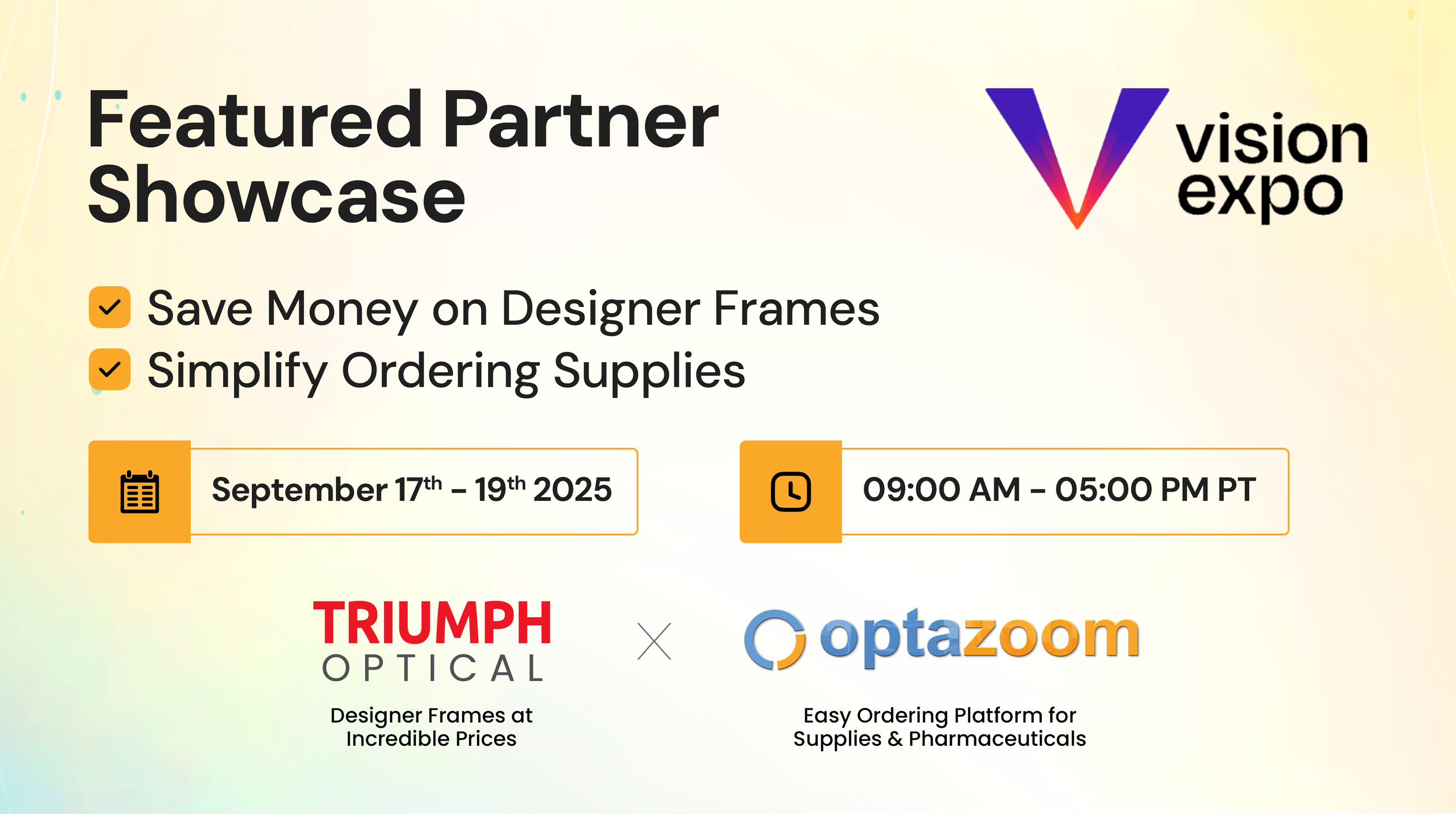
Featured Partner Showcase: OptaZoom + Triumph Optical at Vision Expo
Discover abundant designer frames and supply solutions with Triumph Optical + OptaZoom at Vision Expo West, Booth #21068. Reserve your spot early—our booth fills fast!
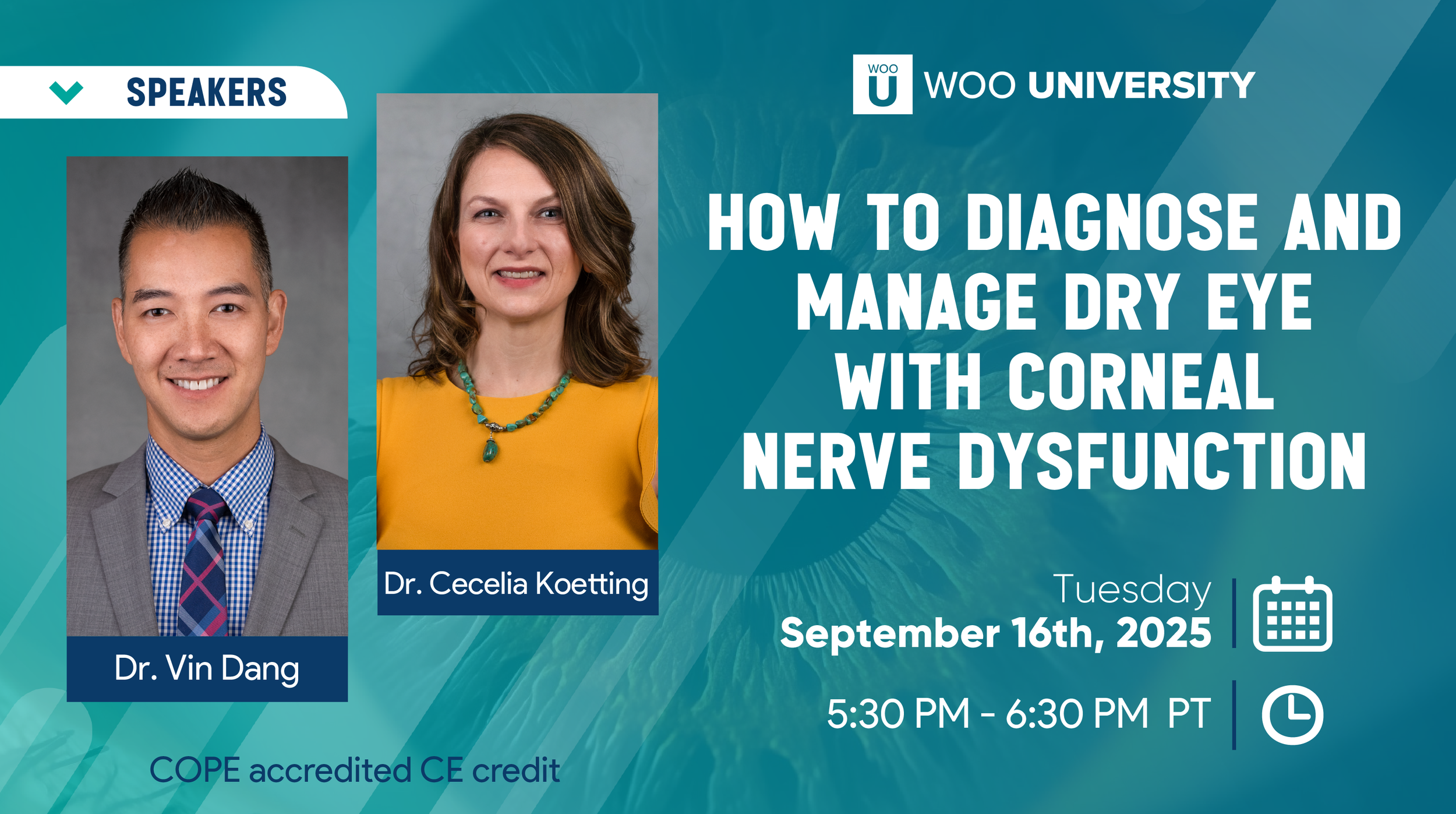
How to Diagnose and Manage Dry Eye with Corneal Nerve Dysfunction
Dry eye from corneal nerve dysfunction is often overlooked, causing persistent symptoms and treatment challenges. This event highlights corneal nerve health, advanced diagnostics, and innovative therapies, giving attendees strategies to improve care for this complex subset of dry eye.
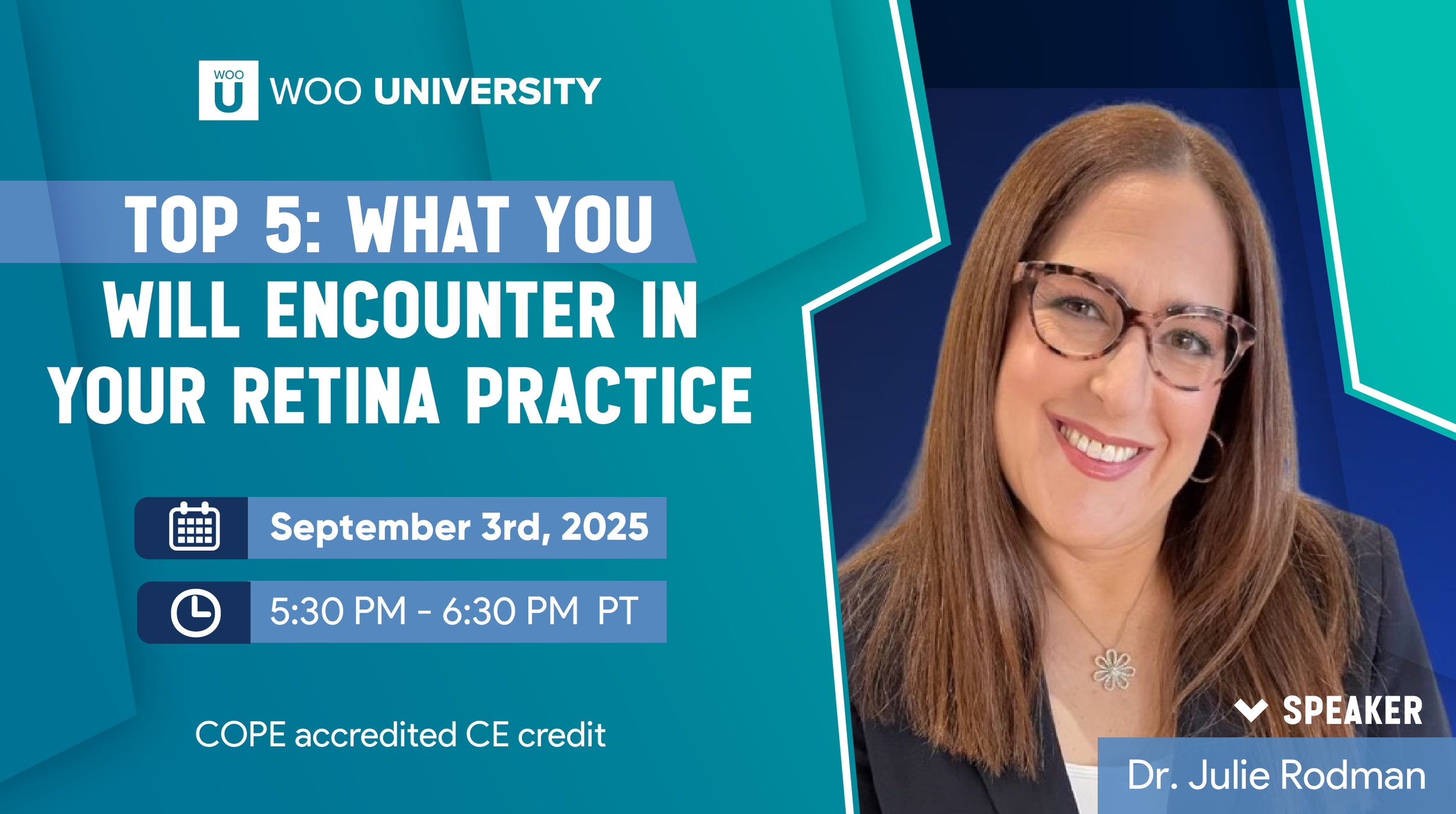
Top 5: What You Will Encounter In Your Retina Practice
This course covers common retinal conditions in optometry, including AMD, diabetic retinopathy, vein occlusion, detachment, and vitreomacular interface disease. It addresses classification, epidemiology, treatment, management, and multimodal imaging for diagnosis.
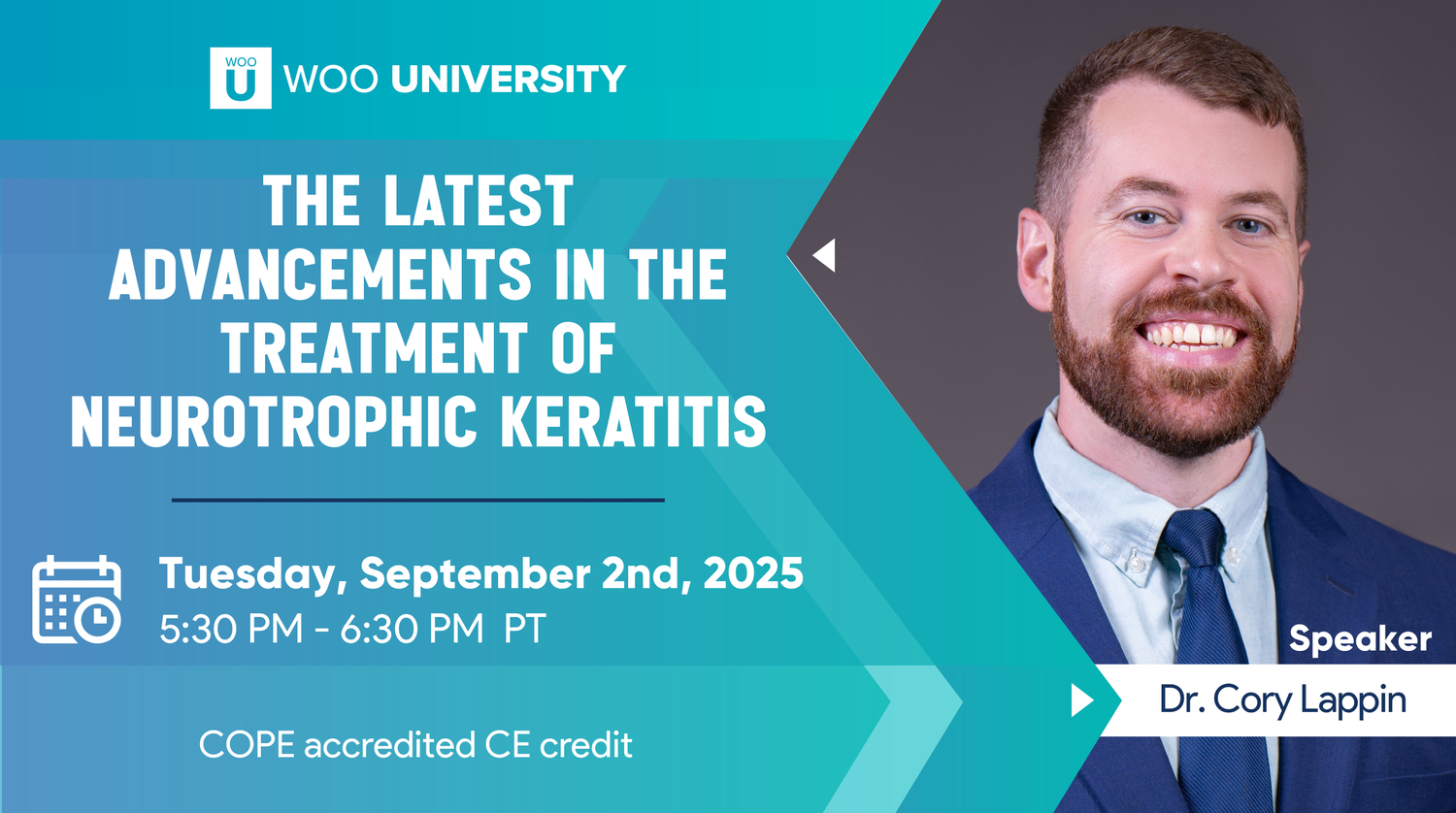
The Latest Advancements in the Treatment of Neurotrophic Keratitis
This course will cover the causes of neurotrophic keratitis (NK) and how to identify and diagnose it, especially in its early stages. Treatments for NK and the importance of early intervention will also be discussed.
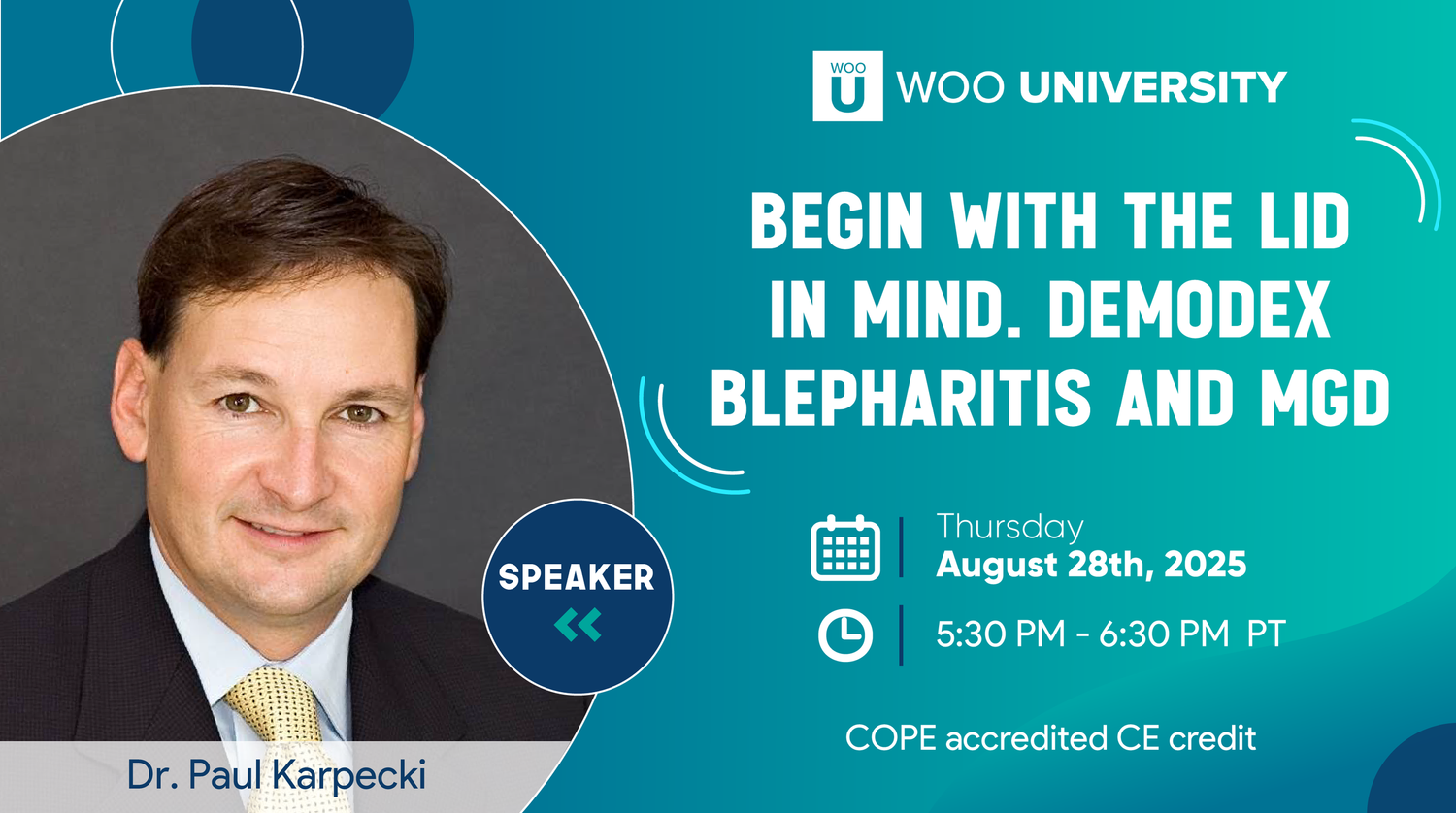
Begin with the Lid in Mind. Demodex blepharitis and MGD
This lecture will dive into the role of Demodex Blepharitis in ocular surface disease including diagnosis and treatment, but recent research has shed light on the association between Demodex Blepharitis and meibomian gland disease (MGD). We’ll look at how MGD plays a role and review the findings of the Ersa study as it may apply to clinical practice.
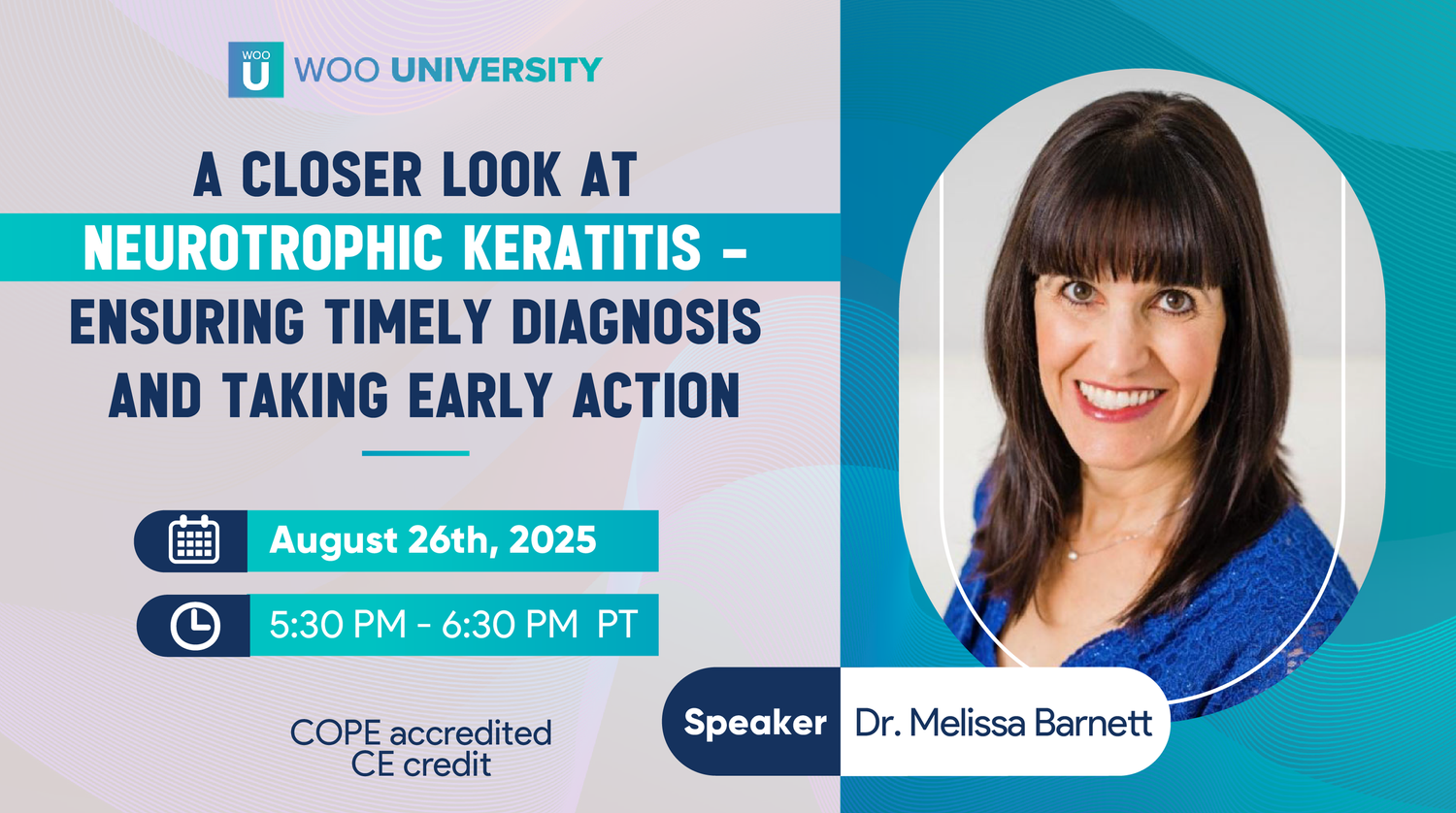
A Closer Look at Neurotrophic Keratitis—Ensuring Timely Diagnosis and Taking Early Action
This course will provide a comprehensive overview of the etiology and pathophysiology of neurotrophic keratitis. The presentation will cover key symptoms, signs, and differential diagnoses, with a focus on timely diagnosis and current management strategies.

Visual Cortex Training – A New Treatment Option to Optimize Vision for Stable Keratoconus Patients
This course will review current options for managing keratoconus patients and challenges, risks, and complications for them. Educating on a new training can improve symptoms for patients, addressing needs without additional risk. The training can be educated, administered, and monitored in any optometric practice and can provide a new opportunity to improve patient symptoms while managing Keratoconus.
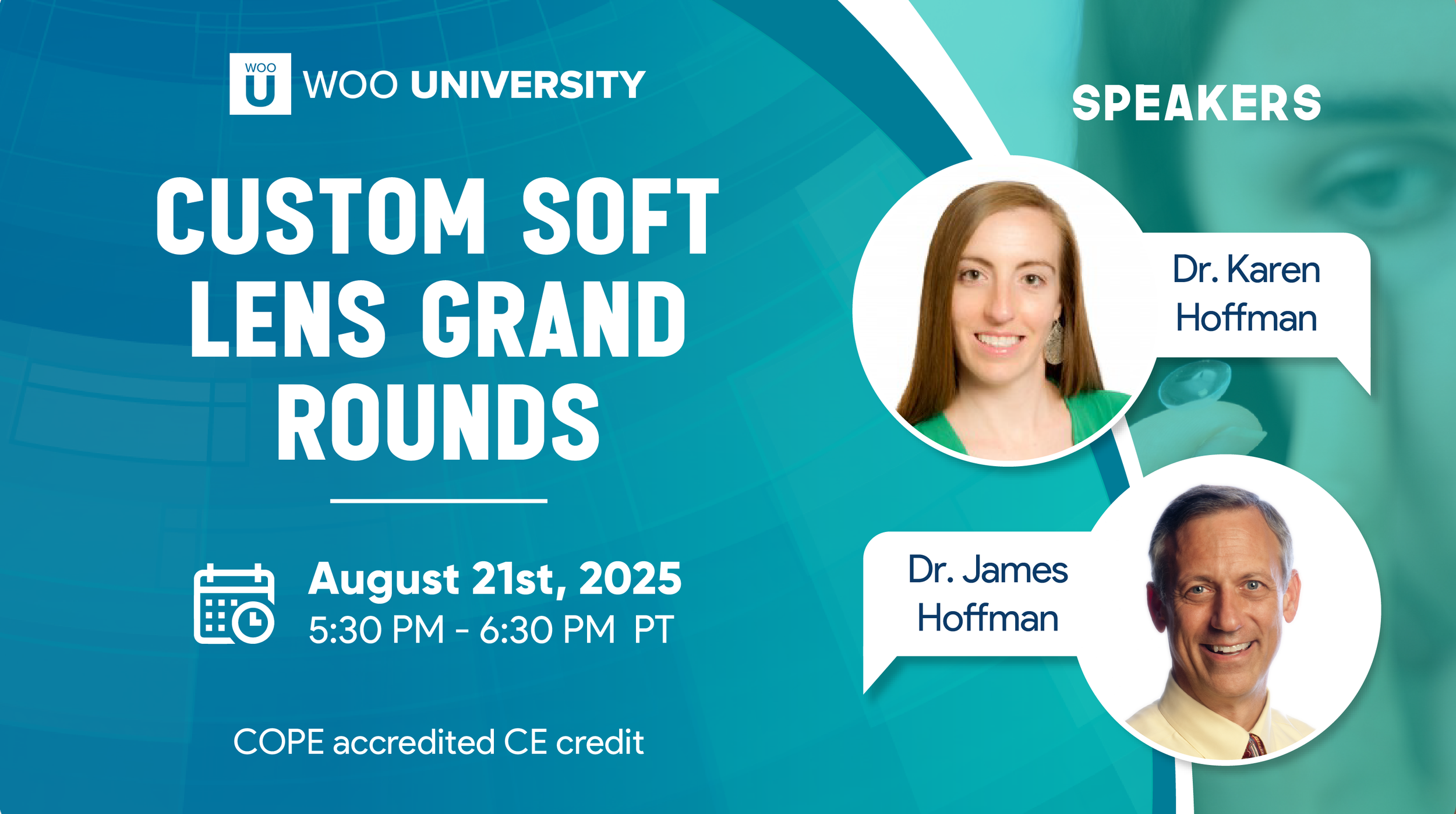
Custom Soft Lens Grand Rounds
In this course, we will review how to select good patient candidates for custom soft lenses. Learn about live patient cases with an exciting presentation of grand rounds.

Aesthetics in Optometry
This course introduces aesthetic considerations within the scope of optometric care, focusing on periocular and facial changes associated with aging, skin conditions relevant to ocular health, and patient-centered cosmetic concerns. The course will also review clinical tools and technologies used to evaluate and address these concerns, while remaining within the medical and ethical guidelines of optometric practice.
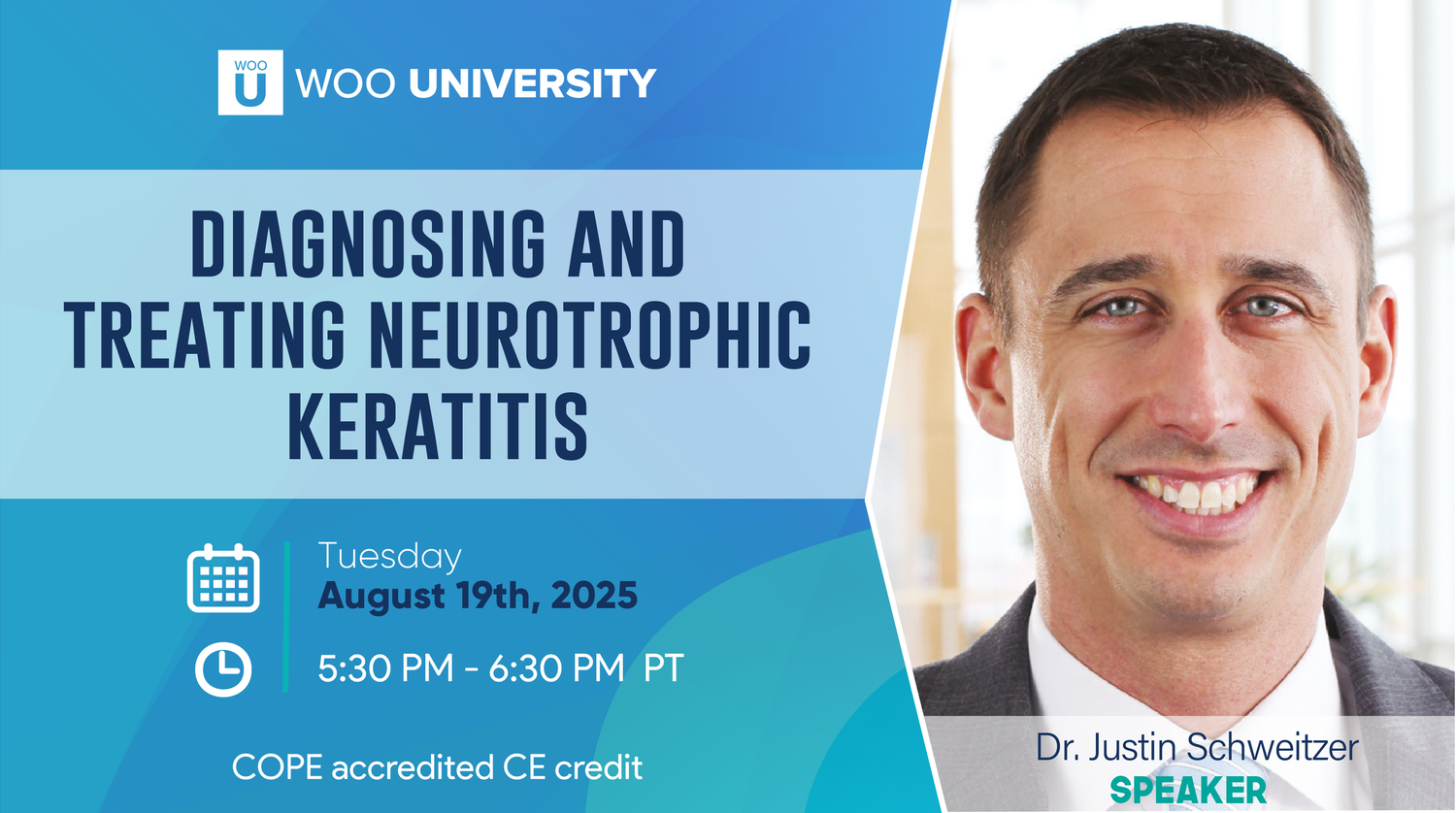
Diagnosing and Treating Neurotrophic Keratitis
This course will cover patient populations at high risk for neurotrophic keratitis, recommend testing procedures to help with diagnosis and help formulate treatment plans to improve outcomes.
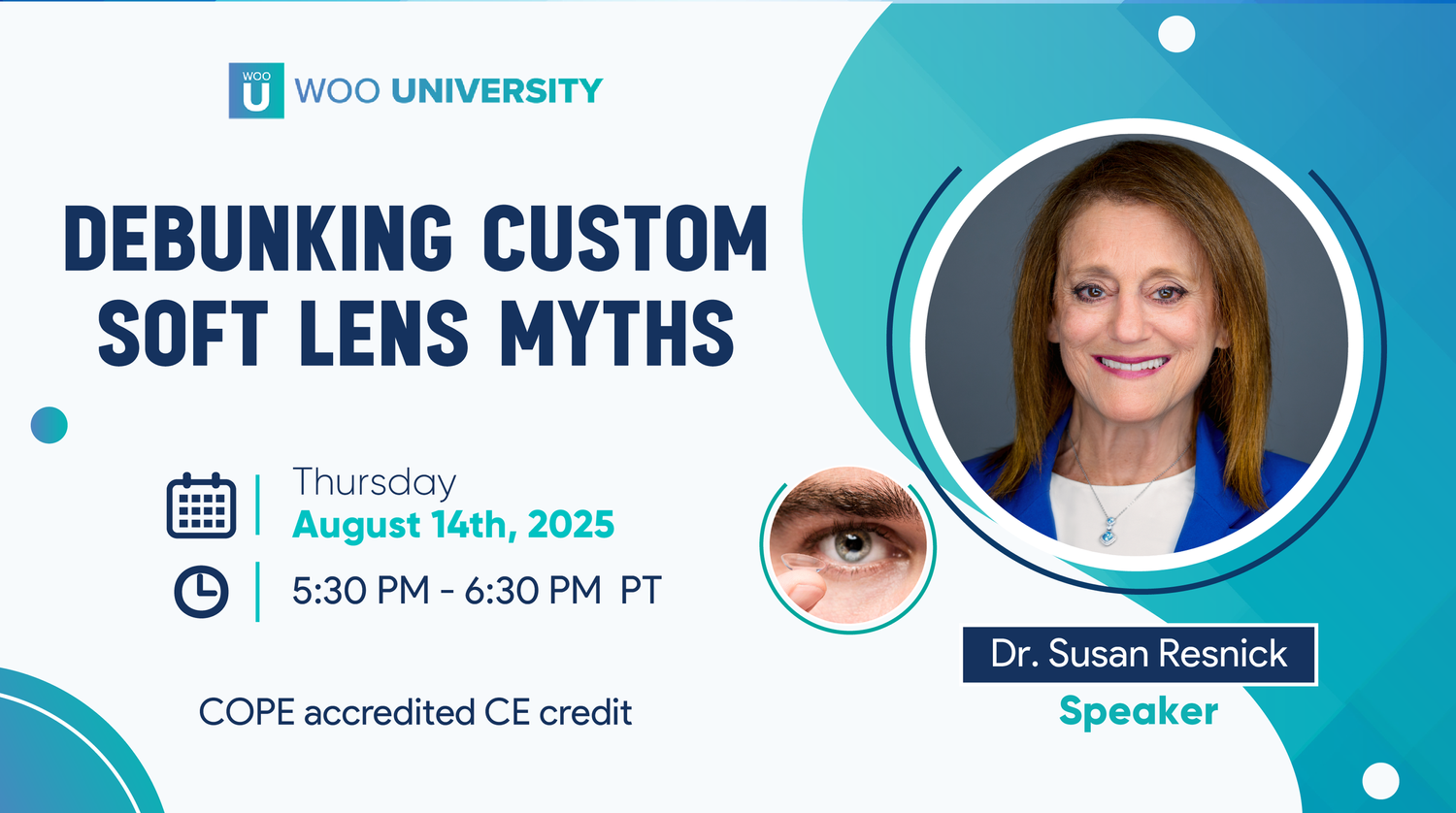
Debunking Custom Soft Lens Myths
This course will highlight some of the pain points with custom soft lenses, and the solutions that currently exist. We will discuss the benefits of custom soft lenses as well.
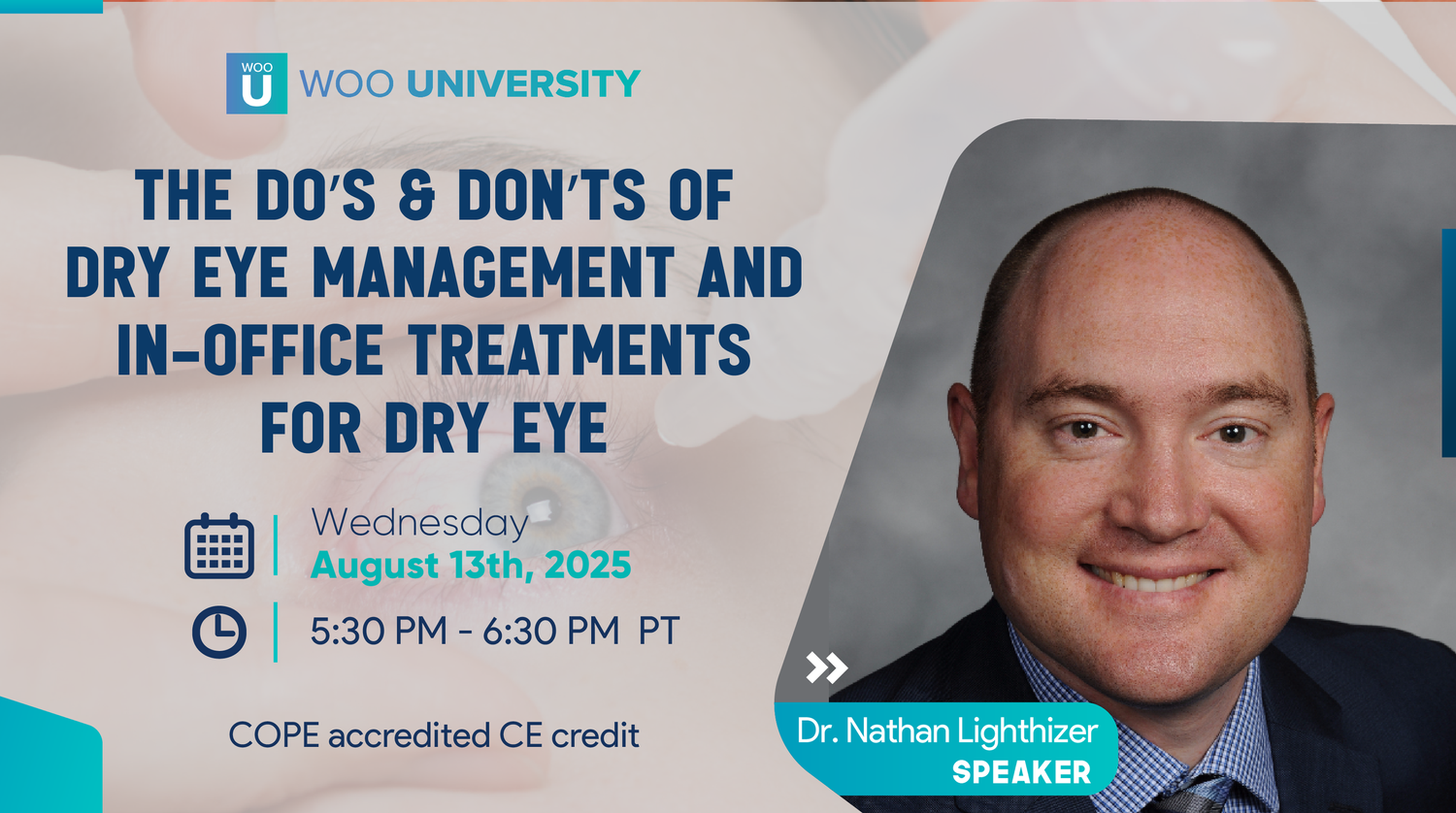
The Do’s & Don’ts of Dry Eye Management and In-Office Treatments for Dry Eye
This course provides a comprehensive overview of Dry Eye Disease (DED), including its multifactorial etiology, underlying pathophysiology, and current diagnostic and classification models. Attendees will gain insight into risk factors, diagnostic tools, and evidence-based treatment options for evaporative and aqueous-deficient dry eye. Emphasis will be placed on integrating DED management into routine optometric practice.
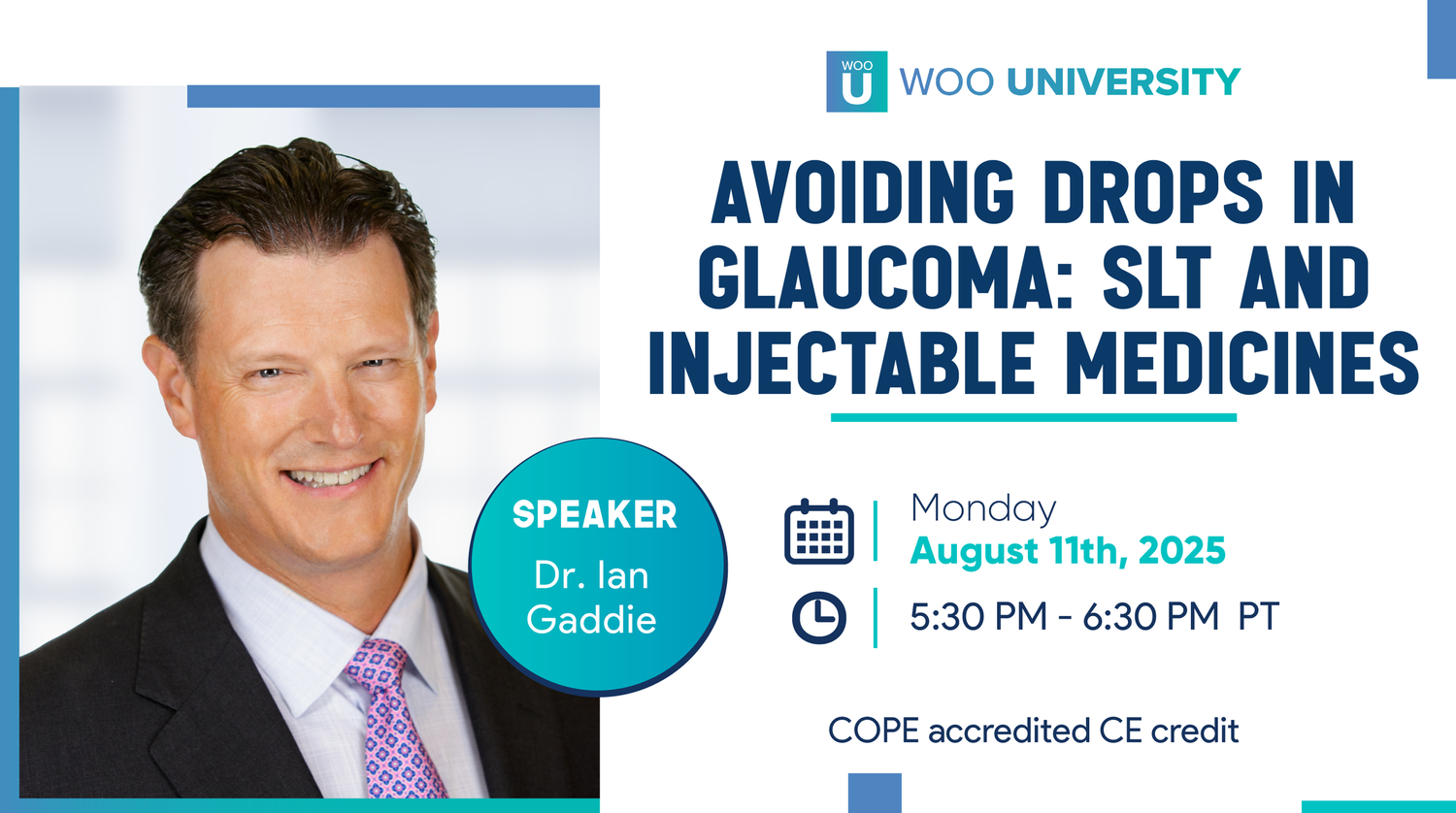
Avoiding Drops in Glaucoma: SLT and Injectable Medicines
This course will look at the paradigm shift from multiple medications, side effects and cost to how we can utilize treatments which put the control and compliance in the doctors hands and reduce non compliance and adherence.
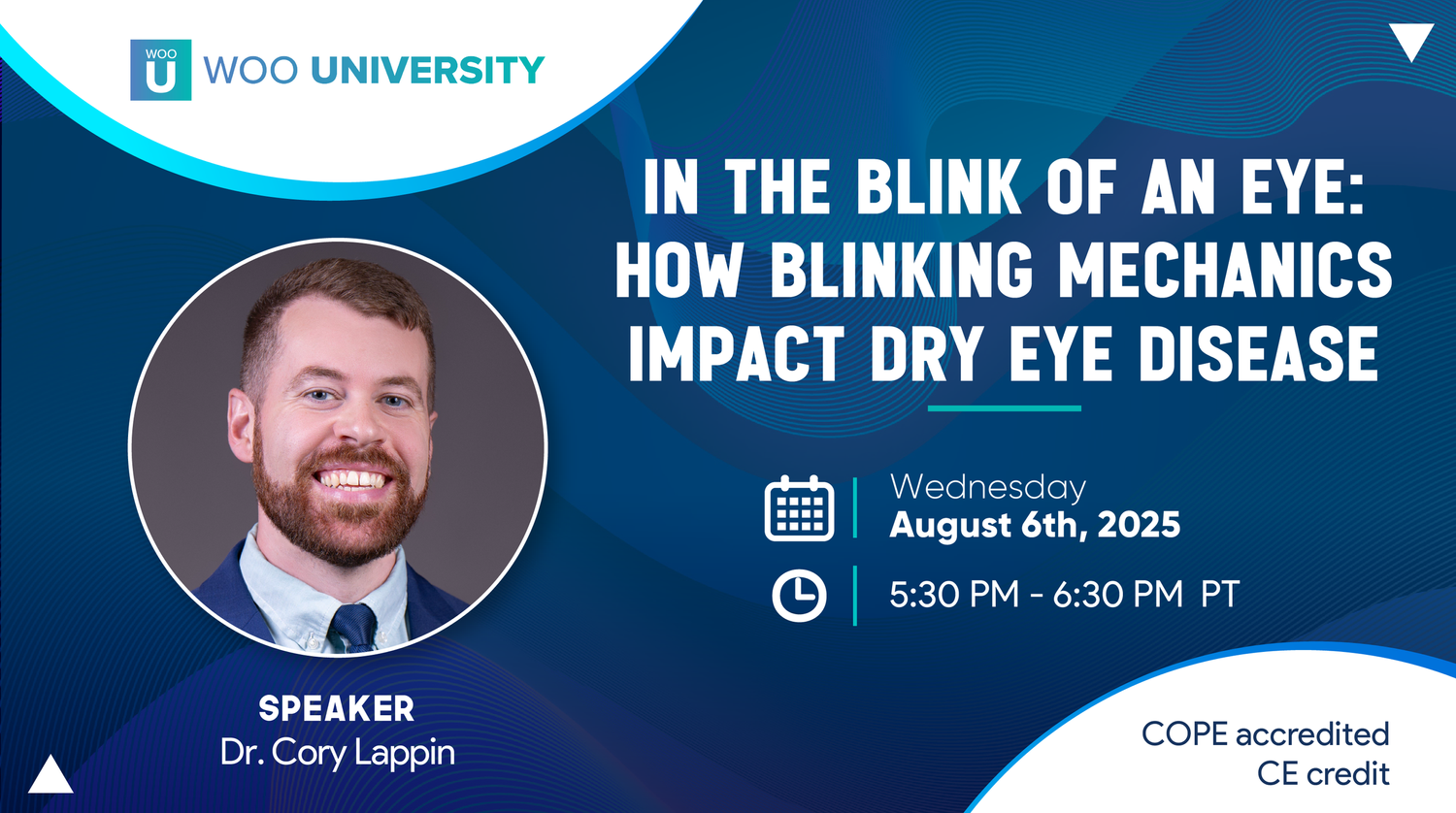
In the Blink of An Eye: How Blinking Mechanics Impact Dry Eye Disease
This course explores the anatomy and physiology of the blink mechanism and its role in maintaining ocular surface health. Attendees will learn about blink patterns, blink completeness, and the impact of blink dysfunction on meibomian gland health and tear film stability. The session will also examine diagnostic methods for evaluating blink mechanics and highlight clinical approaches to managing patients with blink-related disorders.
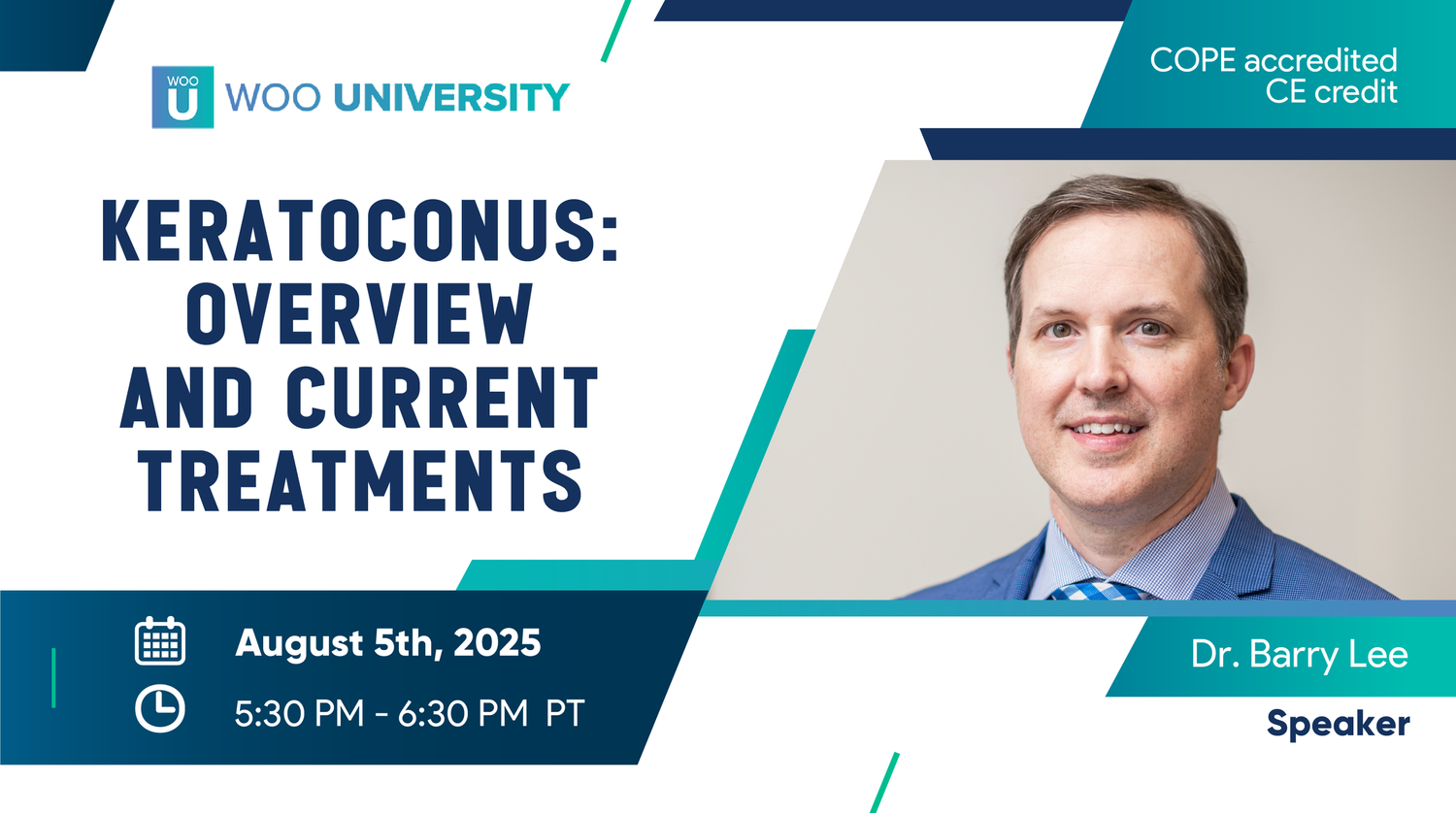
Keratoconus: Overview and Current Treatments
CXL has been approved in the U.S. for nearly a decade now. Dr. Lee will share the most memorable clinical lessons on CXL that has shaped his own clinical practice today, including the significance of FDA-approved CXL, how has it impacted patient quality-of-life (QoL) and reshaped clinical management, how to determine progression for treatment, can older patients progress, can patient younger than 14 be treated and his personal experience of retreating patients who continued to progress after investigational CXL treatments.
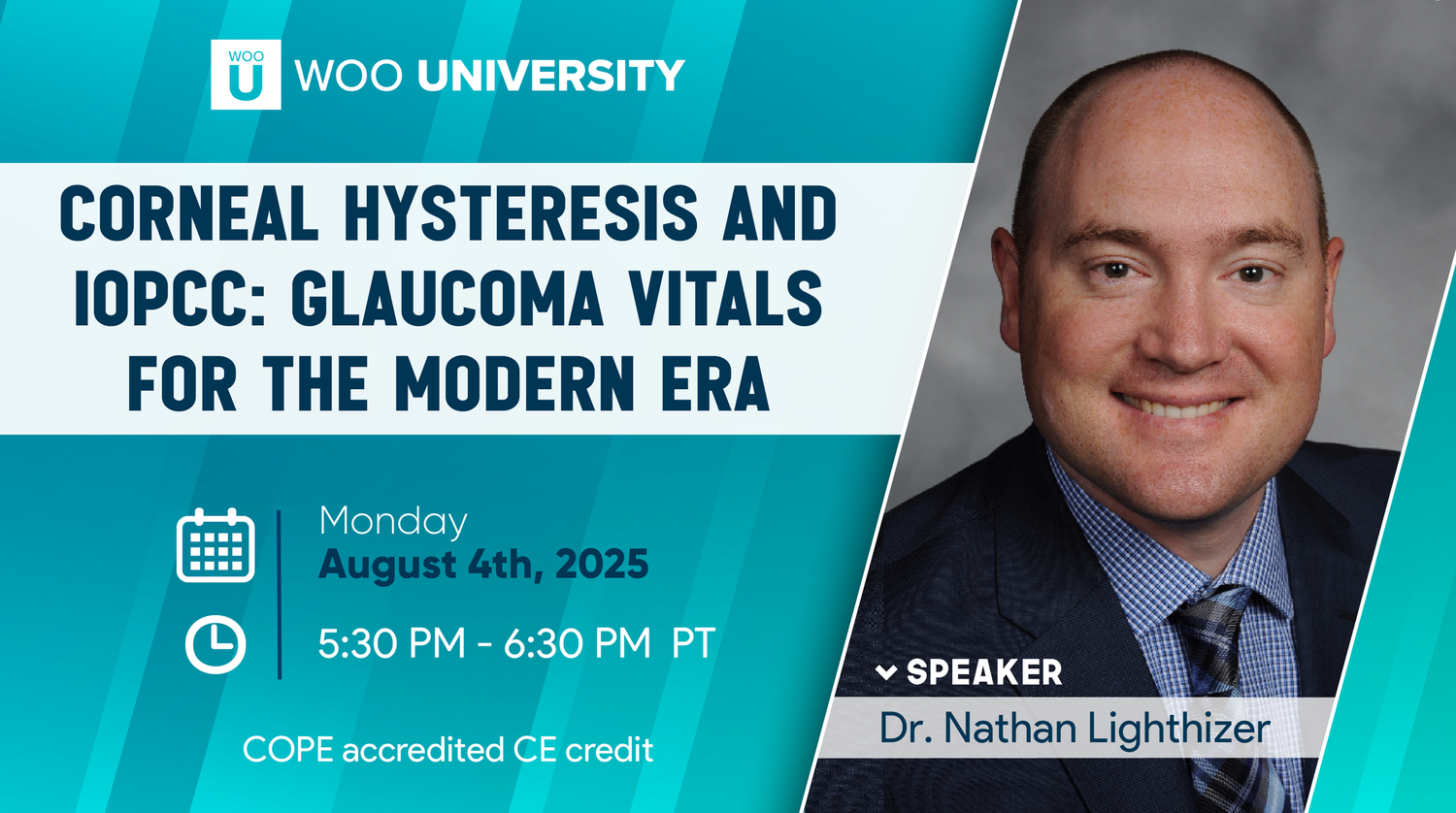
Corneal Hysteresis and IOPcc: Glaucoma Vitals for the Modern Era
Glaucoma is like a large puzzle. There are a lot of pieces of the puzzle that need to be put together to arrive at an accurate diagnosis. This course will cover the data surrounding one of those pieces, corneal hysteresis, and its role in the diagnosis, management, and treatment of glaucoma.
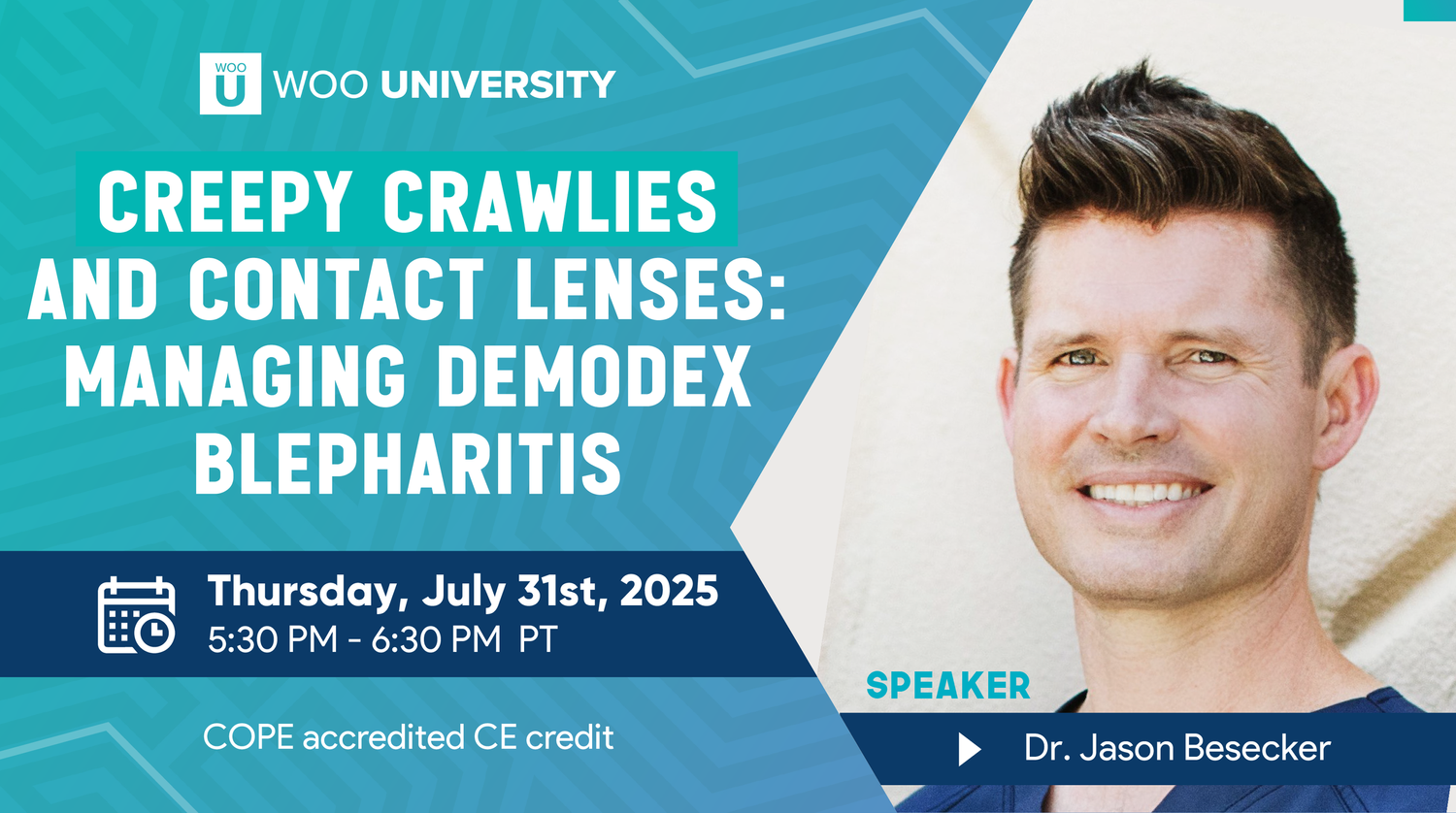
Creepy Crawlies and Contact Lenses: Managing Demodex Blepharitis
This course will discuss the effects of lid disease, particularly demodex blepharitis, and its effect on contact lens wear. Ocular surface disorders can contribute to contact lens dropout, but how much of that is due to lid disorders and blepharitis. Focus will be placed on the nuances of demodex blepharitis, patient communication, and timely treatment and maintenance for contact lens success.

The Role of Laser in the Treatment of Glaucoma
The use of laser energy, specifically laser peripheral iridotomy (LPI) and Selective Laser Trabeculoplasty (SLT), has been utilized in various forms of glaucoma for decades. This interactive 1 hour lecture will review and update clinical evidence and literature regarding laser peripheral iridotomy for narrow angle glaucoma and SLT for open angle glaucoma.
OUR PARTNERS













